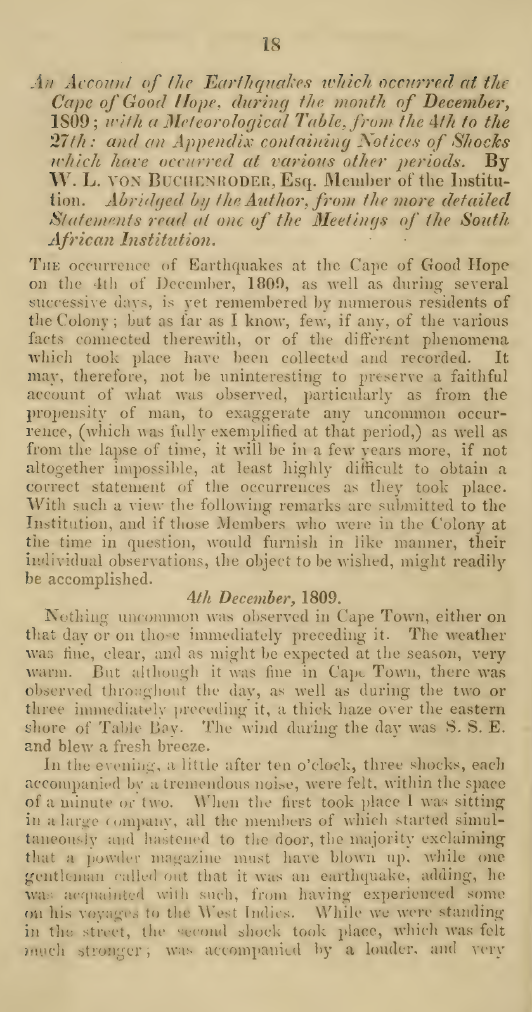An account of the earthquakes which occurred at the Cape of Good Hope, during the month of December, 1809
with a meteorological table, from the 4th to the 27th: and an appendix containing Notices of Shocks which have occurred at various other periods
DOI:
https://doi.org/10.21504/saqj.11.2613Keywords:
Cape of Good Hope -- Earthquakes, Earthquakes -- South Africa, Seismology, Cape Colony, Fissures -- Cape Colony, Geological phenomena, Cape Colony -- Natural historyAbstract
This paper by W. L. von Buchenroeder documents the earthquakes that occurred at the Cape of Good Hope, beginning on the night of December 4, 1809, and presents a faithful account of the phenomena to counteract public exaggeration. The initial event consisted of three strong shocks, accompanied by a tremendous, hollow, rumbling noise, which many residents initially mistook for an explosion from a powder magazine.
Von Buchenroeder documents damage in Cape Town (cracked walls) and reports greater destruction at Jan Biesjes Kraal, where a house was made uninhabitable and fissures (rents) were observed in the ground up to a mile long. Crucially, the author investigates reports of "volcanic eruptions" at Blauweberg’s Valley, debunking the rumour of lava. He explains that the "craters in miniature" were formed by pressurised water and dissolved bluish clay being forced up through the sandy surface by the concussions. The account includes a Meteorological Table and an Appendix listing notices of previous shocks dating back to 1695.
Downloads

